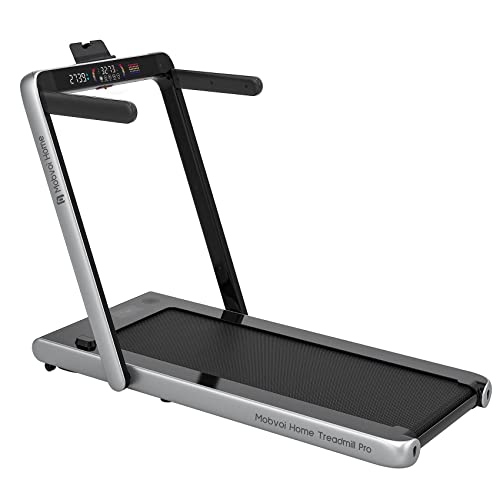The Benefits of Using a Treadmill for Walking: Your Ultimate Guide
In an era where sedentary way of lives have become more typical, finding methods to include exercise can substantially benefit overall health. Walking, thought about Walking Treadmill of the most available kinds of workout, provides a myriad of health benefits. Combining this with a treadmill can make it even easier for people to keep a regular walking regimen, regardless of the weather exterior. This article will dig into the advantages of using a treadmill for walking, compare numerous types, and address some regularly asked concerns-- all planned to help readers make notified choices.
The Advantages of Walking on a Treadmill
1. Convenience and Accessibility
Among the greatest advantages of a treadmill is the convenience it uses. With one in your house, there is no need to venture out in inclement weather or find a safe walking route.
2. Controlled Environment
Treadmills supply a controlled walking environment that enables users to set their rate, incline, and period. This makes sure a tailored workout that meets private fitness goals and requirements.
3. Low-Impact Exercise
Compared to running or jogging, walking is a low-impact exercise that is simpler on the joints. Treadmills frequently have cushioned belts to even more reduce effect tension.
4. Health Benefits
Walking has many health benefits, including enhanced cardiovascular health, boosted mood, much better weight management, and increased durability. Incorporating routine walking on a treadmill can magnify these benefits.
5. Multi-tasking Opportunities
While walking on a treadmill, it's possible to take part in other activities such as reading, viewing television, or listening to music. This makes exercises more enjoyable and can motivate consistency.
6. Danger Removal
Using a treadmill gets rid of hazards related to outside walking, such as unequal surface, traffic, and other environmental risks.
Types of Treadmills: A Comparison Table
Picking the ideal treadmill can considerably affect the walking experience. Below is a comparison table of different types:
| Treadmill Type | Description | Pros | Cons |
|---|---|---|---|
| Manual Treadmills | Requires physical effort to move the belt. | Generally more affordable; no electricity required. | No automated incline or speed modifications. |
| Electric Treadmills | Powered by electricity; adjustable speeds and inclines. | Versatile; easy to utilize; typically includes additional features. | Can be more expensive; needs an outlet. |
| Folding Treadmills | Designed for simple storage and saving space. | Space-efficient; hassle-free for home usage. | Might have a smaller sized running surface area. |
| Industrial Treadmills | Heavier, developed for regular usage in fitness centers. | Resilient; typically packed with features and programs. | Can be extremely expensive. |
How to Get Started with Walking on a Treadmill
If you're brand-new to walking on a treadmill, consider the following actions to produce a safe and effective regimen:
Step 1: Set Your Goals
Identify your walking objectives, whether they are weight loss, improved endurance, or merely an increased day-to-day activity level.
Step 2: Learn the Controls
Acquaint yourself with the treadmill's control panel. Understand how to change speed, incline, and how to utilize any additional functions it may have (heart rate display, workout programs, etc).
Step 3: Warm-Up
Start each walking session with a 5-minute warm-up at a slower pace to avoid injury.
Step 4: Start Slow
Begin with low-intensity walking sessions 2 to three times a week, slowly increasing your period and strength.
Step 5: Incorporate Incline
As your physical fitness improves, consider integrating an incline into your routine to increase strength and work various muscle groups.
Step 6: Cool Down
Conclude your workout with a 5-minute cool-down at a slower rate to assist your body recuperate.
Regularly Asked Questions (FAQs)
1. How long should I walk on a treadmill for health advantages?
The CDC advises a minimum of 150 minutes of moderate aerobic activity, like brisk walking, each week. This equates to about 30 minutes a day, 5 times a week.
2. Is walking on a treadmill much better than walking outdoors?
Both deal advantages, however a treadmill permits a regulated environment, which may match some individuals much better, particularly in varying weather.
3. Can I reduce weight by walking on a treadmill?
Yes, walking can add to weight-loss when integrated with a healthy diet plan. It's vital to keep consistency and slowly increase strength.
4. What speed should I walk on a treadmill?
For beginners, a speed of 3-4 miles per hour is considered a vigorous walk. As endurance improves, people can change their speed according to their fitness objectives.
5. How can I remain encouraged while walking on a treadmill?
Listening to music, watching television programs, or even signing up with virtual walking communities can assist keep motivation levels high.
Including a treadmill into a walking routine can offer immense advantages, making workout accessible and reliable. With many kinds of treadmills offered, people can choose one that best fits their requirements and preferences. By setting sensible goals and planning out routine exercises, users can experience the myriad health advantages that come with walking. Keep in mind to listen to your body, consider a mix of inclines and speeds, and most significantly, delight in the procedure. Walking on a treadmill is not simply exercise; it's a step towards a much healthier lifestyle.

